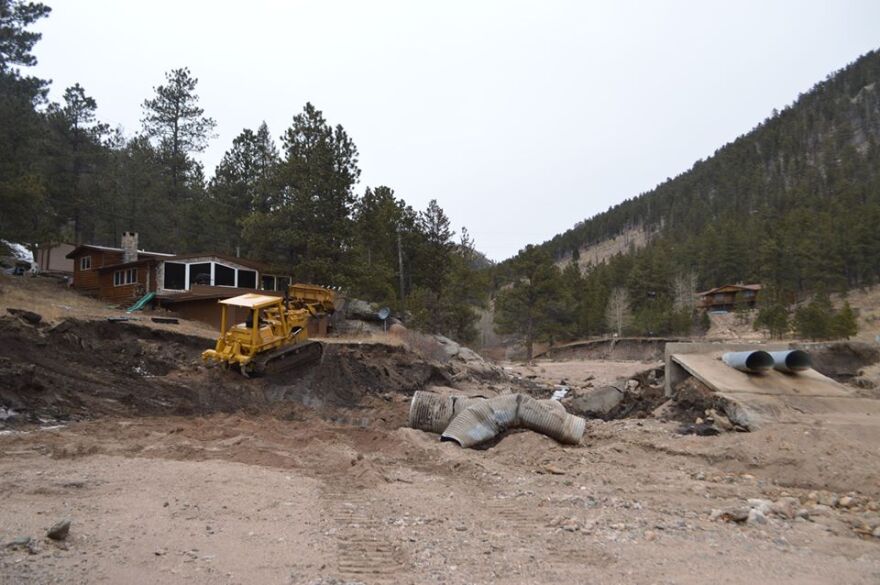Spring runoff has begun in many parts of the state, bringing with it the annual flood concern. In Boulder County, officials are cautiously optimistic that waterways can withstand normal spring runoff after removing debris left by the 2013 floods.
Director for the Boulder Office of Emergency Management Mike Chard said the waterways should withstand normal spring runoff. However there is still an increased chance for landslides.
“Most of the Front Range here in Boulder County is in what the United States Geological Survey classifies as a high-hazard landslide area, and when you put a higher ground water on it that means it could be more susceptible to a landslide event,” he said.
"...there's the initial high interest and then the next year there is a little less."
Chard cautions the water table is still elevated from the 2013 rainfall.
“We did put a lot of effort last year into getting the creeks and the rivers in shape to handle spring runoff and the good news on that is we’re seeing that that is going to carry forward this year,” he said. “We’ve had some assessments done; there is still a lot of work going on within the creeks and rivers. We’ve been watching these things throughout the year.”

Unlike last spring, reservoir and snow pack levels are lower so if another big storm occurs there are places for the water to go. But Chard cautions that many roads that were rebuilt after the flood are temporary, so their condition will be monitored by engineers.
As expected, Chard said community interest in spring runoff and the county’s waterways has dropped off.
“What we’ve seen after the Fourmile Canyon fire and every other major event we’ve had, is there’s the initial high interest and then the next year there is a little less,” he said. “And then by the third or fourth year people return to a sort of, ‘well it didn’t happen the last two years so we don’t really need to worry about it.’ But, of course, people living directly with the threat are still more engaged.”
http://youtu.be/jrunnLtmRO4





